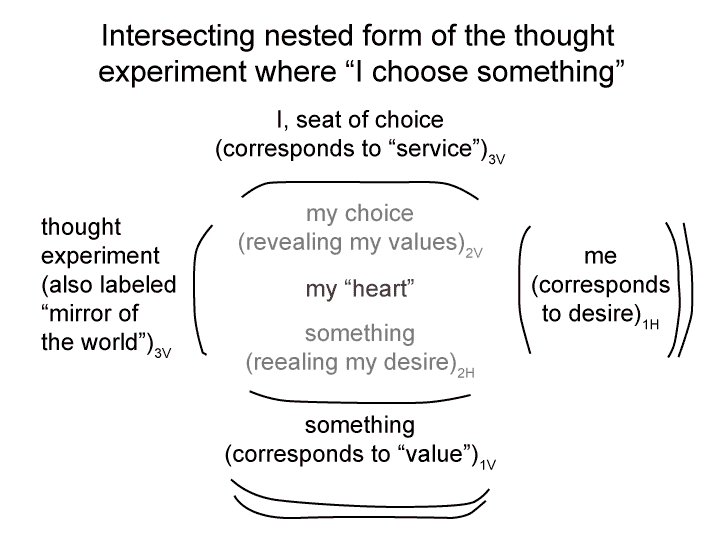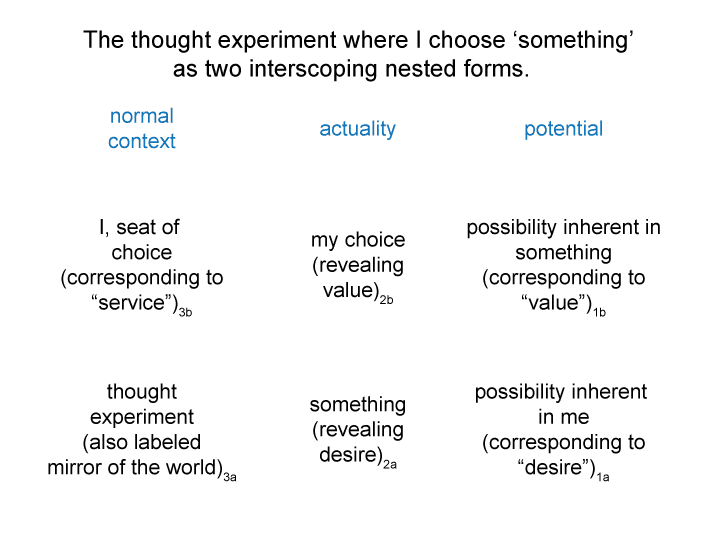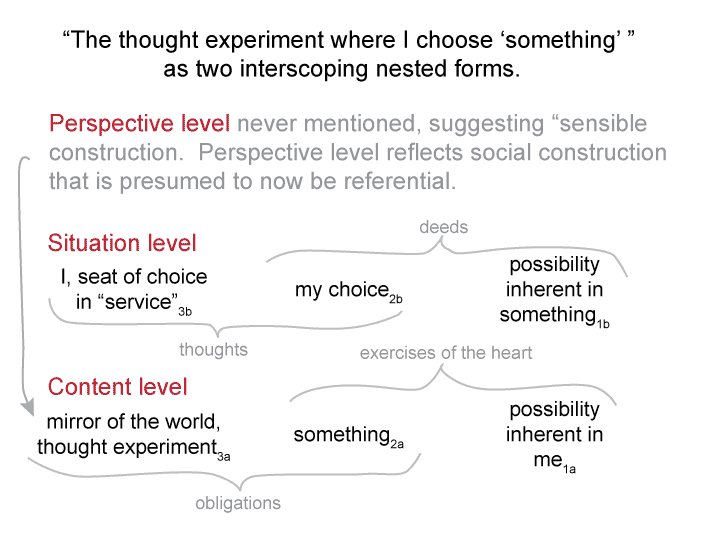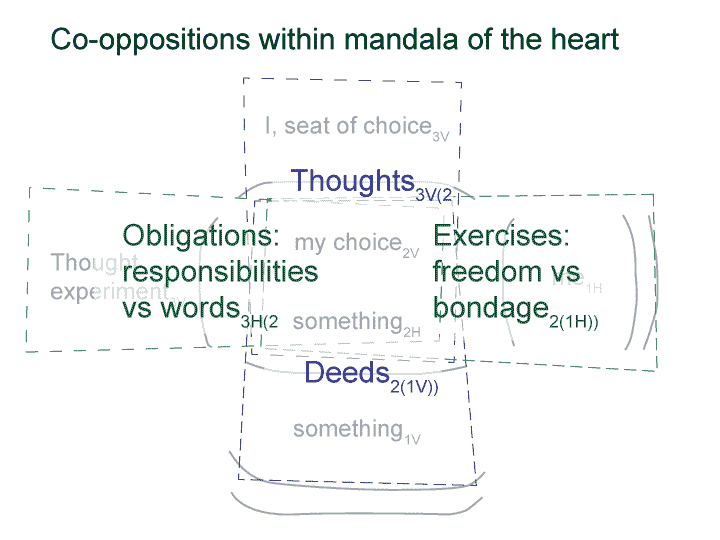Man and Sin by Piet Schoonenberg (1964) 2.3 IN
[In the interscope, thoughts and deeds emerge from and situate responsibilities and freedom.
The something (value) underlying my choice1b directly emerges from and situates the something (revealed desire) emerging from and situating me2a.
The something underlying my choice (value)1b virtually emerges from and situates the potential inherent in me (desire)1a.]
Man and Sin by Piet Schoonenberg (1964) 2.3 IK
Summary of text [comment] page 83
[In the interscope, the categorical transition of obligation goes with the content level nested form:
Thought experiment3a( something2,a( __1a))
One type of obligation is responsibility. The other type is words.
Here is the arena where freedom in God or bondage in Satan plays out.
Once an obligation illuminates the mirror of the world3a, then (what Schoonenberg called) “service” follows.]
Man and Sin by Piet Schoonenberg (1964) 2.3 IJ
[Once the contradictions within the single actuality of the heart2 are resolved, the mandala of the heart becomes an icon, rather than a lived experience.
The intersection reverts to interscope.]




